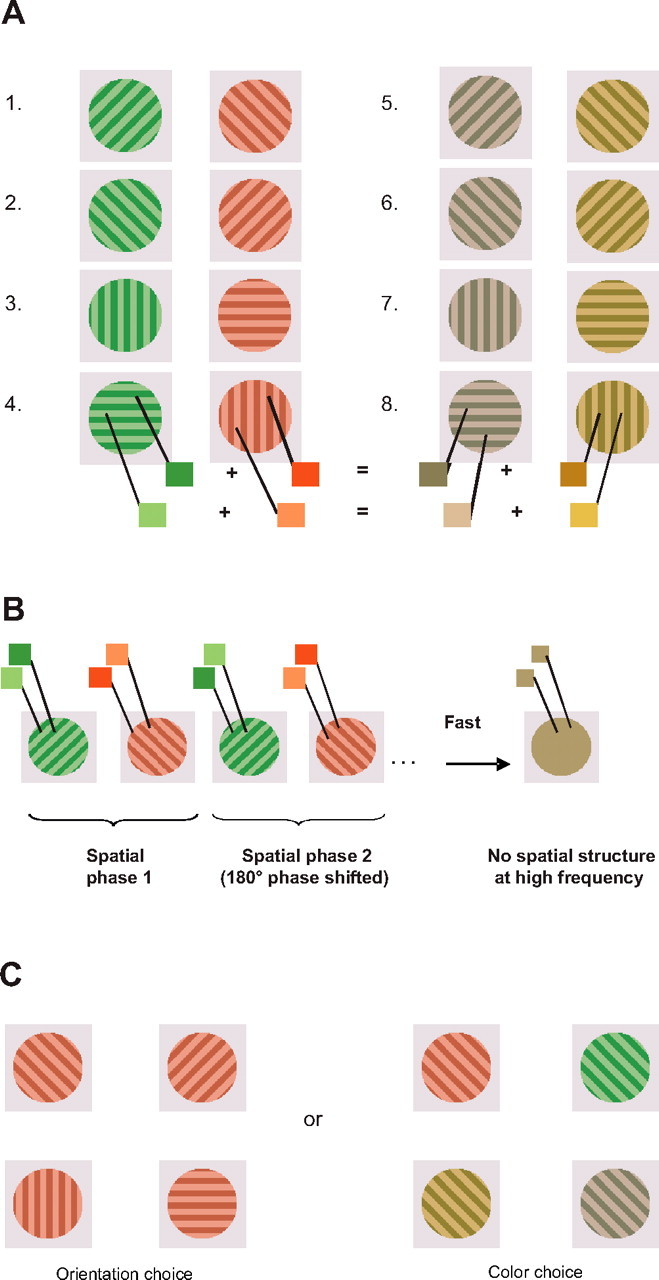Figure 1.

Experimental paradigm. A, The eight sequences, each of which was composed of two gratings. Colors were selected so that at sufficiently high presentation frequencies, the two possible color pairs combined to form the same color. B, The relative spatial phases of each successive instance of a given grating were offset by 180°. At sufficiently high presentation frequencies, this yielded a spatially uniform stimulus with no orientation information. C, Examples of orientation choice and of color choice.
